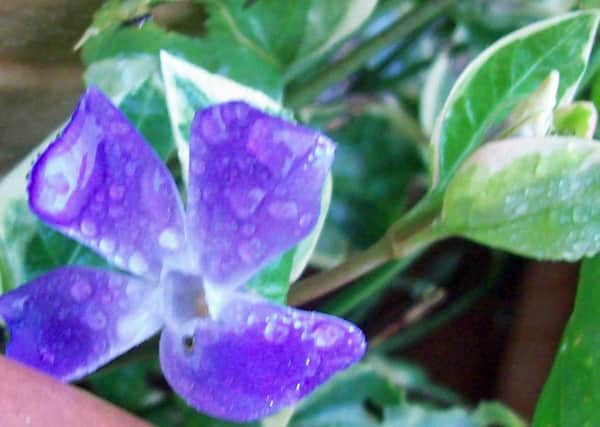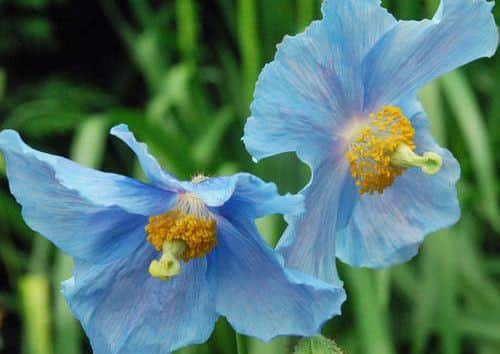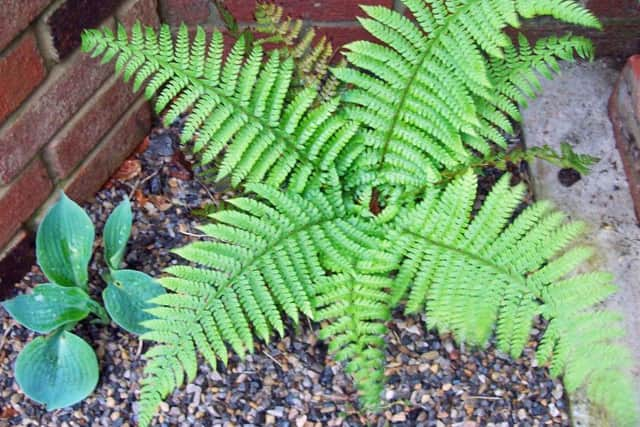GARDENING: Getting the best from a plot in the shade


However, more and more of us in urban or suburban homes have this to contend with – sunlight not blocked by trees but by other buildings.
You can have a lush garden in semi shade or shade – most people think of hostas, which thrive in light-medium shade but will not tolerate dry conditions – and there’s the slug/snail problem, so I haven’t listed them.


Advertisement
Hide AdAdvertisement
Hide AdThe amount of sun/shade will change with the seasons – really examine where the sunshine hits as the days wear on.
We see ‘full sun’, ‘partial sun/shade’, ‘dappled sun/shade’ and full shade on plant labels – this is what they mean.
Full sun: six full hours or more of direct sunlight at any time of the day.
Partial sun/shade: Three-six hours of sunlight each day, usually morning and early afternoon sun.


Advertisement
Hide AdAdvertisement
Hide AdDappled sun: Similar to partial shade, only the light is filtered through a deciduous tree.
Light shade: Shadow cast by a building, wall, hedge, or tree on a site exposed to the sky and open to light.
Full shade: Less than three hours of direct sunlight, best if it’s morning light.
Deep shade: Dense kind of shade found under evergreens or shrubs that do not allow any direct light to penetrate.


Suitable plants:
Advertisement
Hide AdAdvertisement
Hide AdLight and dappled shade: Campanula, Stachys, golden rod, Aquilegia, foxglove, bleeding heart, Pulmonaria, Brunnera, Ajuga, Tiarella, forget-me-nots.
Full shade: Pachysandra terminalis, box, ivy, ferns, Hebe rakaiensis, Phillyrea angustifolia, Ajuga, Bergenia x schmidtii. Griselinia littoralis, Hydrangea quercifolia, Mahonia, Pittosporum tenuifolium, Sambucus, Epimedium, Galium odoratum, Luzula, Euonymus fortunei Emerald Gaiety, x Fatshedera lizei Variegata, Lonicera nitida Baggesen’s Gold, Hydrangea seemannii, Lonicera henryi, Pileostegia viburnoides, Schizophragma integrifolium.
Deep shade: Butcher’s broom, Iris foetidissima, wood spurge, spring bulbs, snowdrops, winter aconites, Vinca.


Dry shade: Alchemilla mollis, barrenwort, cranesbill geraniums, Hellebores, masterwort, Astrantia, ivy, Cyclamen, Viola labradorica, sweet rocket, Convallaria, Pulmonaria, Rubus tricolor, Symphytum, Vinca, Waldsteinia ternata, ferns such as Dryopteris filix-mas, Polypodium vulgare or Polystichum setiferum, Fatsia japonica.
Advertisement
Hide AdAdvertisement
Hide AdDamp shade: Bleeding heart, Monarda, Astilbe, Actaea, Solomon’s seal, toad lily, Himalayan blue poppy, Heuchera, Deinanthe caerulea, Maianthemum racemosum (American spikenard), Saxifraga stolonifera (strawberry saxifrage), Gentiana asclepiadea (willow gentian), Rheum, Rodgersia.
JOBS TO DO THIS WEEKEND
Sow hardy annuals directly into borders. They will overwinter and flower next summer.
Propagate perennials by dividing once they have finished flowering, but only in areas with some rain and duller weather, to avoid drying out problems.
Don’t be worried by bright green, heavily-armoured looking insects on your plants – these are harmless shieldbugs, which do not require control.
Advertisement
Hide AdAdvertisement
Hide AdGet in qualified tree surgeons to remove large shrubs and trees that were casualties of winter waterlogging and summer drought. Remove stumps wherever possible, as rots could spread to other plants.
Ventilate conservatories to their maximum to prevent soaring temperatures. Use shading if necessary. Damp down greenhouses on hot days to maintain humidity levels.
Clearing out fallen leaves and debris regularly from ponds will help to keep down algal growth, as there will be fewer nutrients available from rotting organic matter. Barley straw pads or extract may also be beneficial.
Don’t cut off the flowerheads of ornamental grasses. These will provide winter interest.
Advertisement
Hide AdAdvertisement
Hide AdRemove and destroy any Nicotiana showing signs of downy mildew. This shows up as yellowish blotches on the upper surface of the leaves.
Take cuttings of herbs such as rosemary, sage or mint now to bulk up supplies. Put cuttings in moist, well-drained potting compost (one part grit to one part compost) and place in a cold frame. Established chives can be divided now.
GET IN TOUCH
For more on these topics, plus cook what you grow, traditional recipes, North East information, environmental news and more, log on to www.mandycanudigit.co.uk (now smartphone friendly), www.sunderlandecho.com/gardening, follow me on Twitter @MandyCanUDigIt or you can like me on Facebook at Mandycanudigit